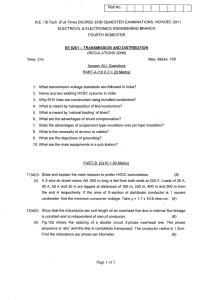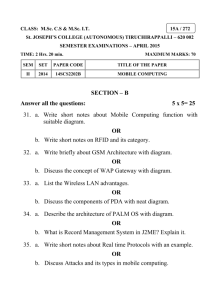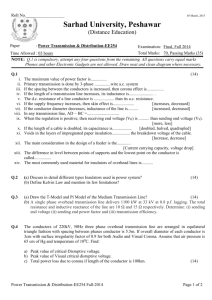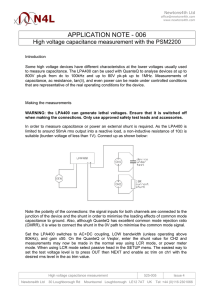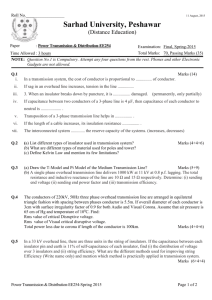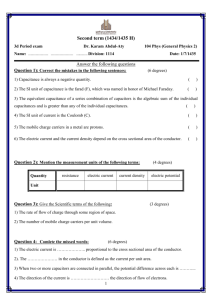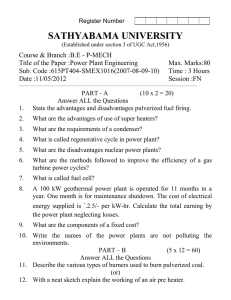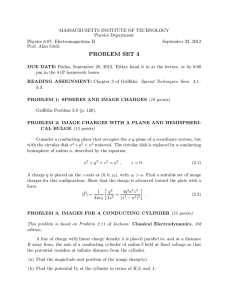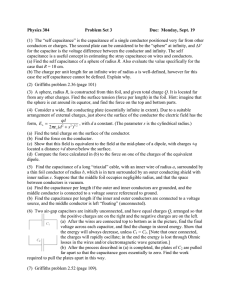sathyabama university - IndiaStudyChannel.com
advertisement
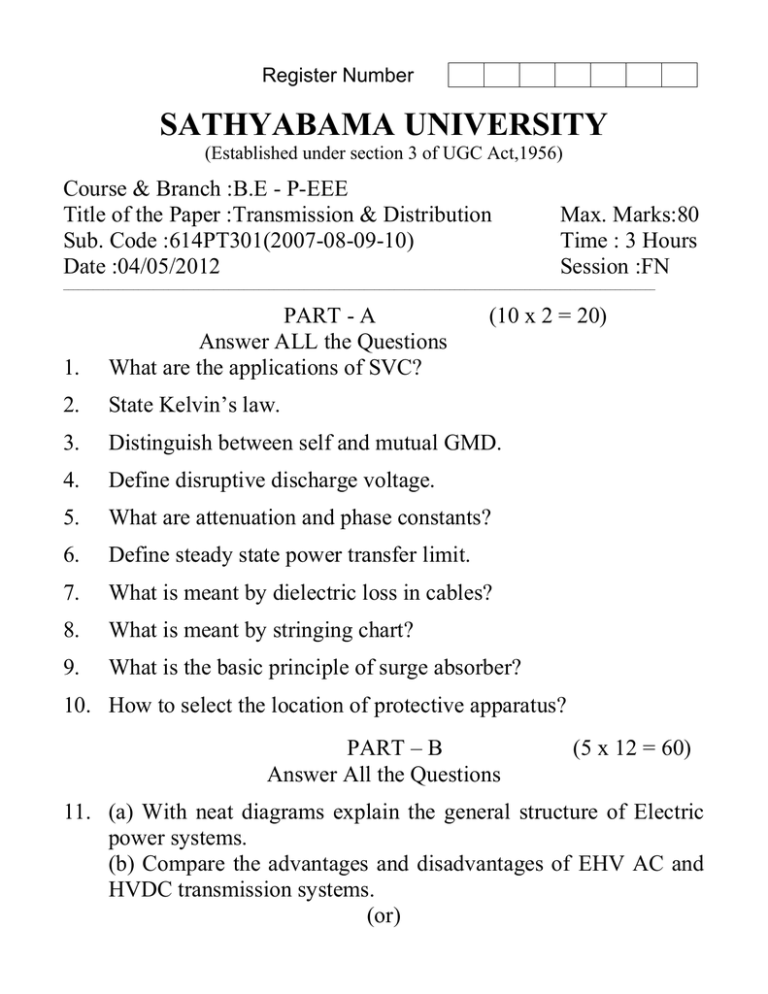
Register Number SATHYABAMA UNIVERSITY (Established under section 3 of UGC Act,1956) Course & Branch :B.E - P-EEE Title of the Paper :Transmission & Distribution Sub. Code :614PT301(2007-08-09-10) Date :04/05/2012 Max. Marks:80 Time : 3 Hours Session :FN ______________________________________________________________________________________________________________________ 1. PART - A Answer ALL the Questions What are the applications of SVC? (10 x 2 = 20) 2. State Kelvin’s law. 3. Distinguish between self and mutual GMD. 4. Define disruptive discharge voltage. 5. What are attenuation and phase constants? 6. Define steady state power transfer limit. 7. What is meant by dielectric loss in cables? 8. What is meant by stringing chart? 9. What is the basic principle of surge absorber? 10. How to select the location of protective apparatus? PART – B Answer All the Questions (5 x 12 = 60) 11. (a) With neat diagrams explain the general structure of Electric power systems. (b) Compare the advantages and disadvantages of EHV AC and HVDC transmission systems. (or) 12. (a) Explain the operation of UPFC with neat diagram. (b) Draw the Electrical layout of a generating sub-station and explain its elements. 13. A double circuit three-phase line has conductors of 2.5cm diameter and distance of separation D is 2m in the hexagonal spacing arrangement. Calculate capacitance to neutral per phase of the system for 100 km line length. (or) 14. Derive suitable expression for corona loss and explain the methods of reducing the corona loss. 15. A 220 kV, 3 phase overhead transmission line has an impedance per phase of (20 + j100) ohm and admittance of j 0.001 mho. Using -model, determine the sending end voltage and current when the current at the receiving end is 200 ampere at 0.8 p.f.lagging. (or) 16. A 275 kV, three phase line has the following line parameters: A = 0.93 1.5º, B = 115 77º If the receiving-end voltage is 275 kV, determine using power circle diagram: The sending-end voltage required if a load of 250 MW at 0.85 lagging pf is being delivered at the receiving-end. 17. (a) Write brief note on inter-sheath grading of cables. (5) (b) Each of the three insulators forming a string has a selfcapacitance of C Farads. The shunting capacitance of the connecting metalwork of each insulator is 0.2C to earth and 0.15C to the line. A guard ring increases the capacitance to the line of the metalwork of the lowest insulator to 0.3C. Calculate the string efficiency of this arrangement with the guard ring. (7) (or) 18. An overhead line has the following data: Span length 185 metres. Difference in levels of supports 6.5 metres Conductor diameter 1.82 cm Weight per unit length of conductor 2.5 kg/metre Wind pressure 49 kg/m2 of projected area. Maximum tensile stress of the conductor 4250 kg/cm2 Factor of safety 5 Calculate the allowable sag in metres at the lower support 19. (a) Explain the concept of lightning with neat diagram. (b) Explain the causes of insulation failures. (or) (8) (4) 20. (a) Explain the function of Peterson coil. (5) (b) With neat diagrams explain the construction and working of Lighting Arrester. (7)
